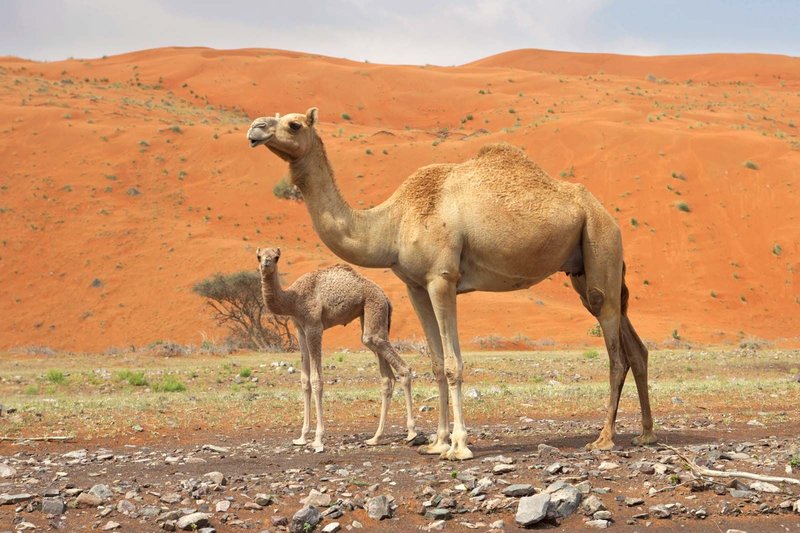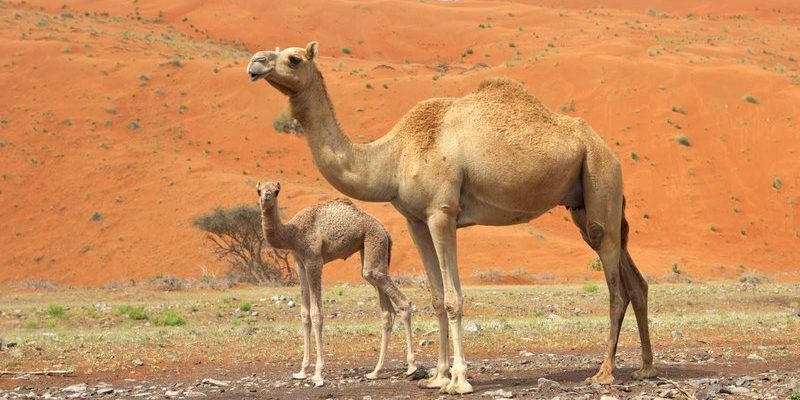
The dromedary isn’t just a beast of burden; it’s a key player in the desert’s delicate balance. Imagine the way waves crash against a shoreline, shaping the land and influencing the creatures that live there. Similarly, the dromedary shapes its ecosystem through its actions, habits, and interactions with other species. From providing sustenance to predators and scavengers to influencing vegetation growth, the dromedary’s role is both fascinating and essential.
In this article, we’ll dive into the various ways dromedaries contribute to their ecosystems. We’ll discuss their interactions with plants, other animals, and even humans, painting a clearer picture of why this animal is so important to desert life.
The Dromedary’s Habitat
The dromedary primarily roams the arid deserts of North Africa and the Middle East. These vast, dry landscapes are challenging environments for many species, but the dromedary thrives here. With its ability to withstand extreme temperatures and go long periods without water, it’s well-suited for life in a place where resources are scarce.
The dromedary’s unique adaptations make it a crucial part of this ecosystem. Its long legs allow it to cover great distances in search of food or water, while its hump stores fat, which can be converted into energy during dry spells. This adaptability not only helps the dromedary survive but also impacts other species that depend on the same resources.
In these deserts, where vegetation is often sparse, the dromedary plays a vital role in nutrient cycling. As it grazes on shrubs and grasses, it helps control plant populations and promotes diversity. This, in turn, supports other animals that rely on these plants for shelter and food.
Plant Interactions and Grazing Habits
Dromedaries are herbivores, primarily feeding on tough, dry plants that most other animals would struggle to eat. They have a special way of grazing that allows them to munch on prickly shrubs and coarse grasses without much trouble. By doing this, they help shape the landscape of their habitat.
As they graze, dromedaries assist in the growth of certain plant species. Their eating habits can prevent overgrowth and promote a diverse plant community, which is essential for the overall health of the ecosystem. This balance allows for healthier soil and promotes biodiversity.
Moreover, when dromedaries move around, they inadvertently help in seed dispersal. Some plants rely on animals to spread their seeds, and as dromedaries munch on these plants, they consume the seeds, which then pass through their digestive systems. When these seeds are deposited in other areas, they can germinate and grow, helping to spread the vegetation across the desert.
Role in the Food Chain
Dromedaries play an important role in the food chain as both prey and scavengers. While they are large animals, they still have natural predators, such as lions and hyenas. These predators rely on dromedaries as a food source, which helps maintain the balance of the ecosystem.
Beyond being prey, dromedaries also contribute to their environments as scavengers. When they die, their carcasses provide crucial nutrition for various scavengers, including birds, insects, and smaller mammals. This process of decomposition enriches the soil and supports new plant growth, further integrating the dromedary into the ecosystem.
Moreover, since dromedaries can thrive in harsh conditions, they can keep some areas of the ecosystem balanced even when other animals might struggle to survive. Their resilience ensures that they remain a stable part of the ecosystem, promoting the survival of various other species.
Human Interaction and Domestication
Humans have relied on dromedaries for centuries, mainly as pack animals and sources of food, such as milk and meat. Their strong, durable bodies make them perfect for carrying heavy loads across desert terrain. This has made them integral to trade and transportation routes, especially in regions where vehicles might struggle to navigate.
Dromedaries have also been domesticated to help farmers manage and stabilize their land. Farmers often use dromedaries to assist in herding livestock, improving efficiency in their agricultural practices. This close relationship demonstrates how dromedaries not only shape their ecosystems but also influence human livelihoods.
In addition, raising dromedaries can contribute to local economies. Their milk is a staple for many desert-dwelling families, providing nutrition that’s hard to come by in arid environments. People have developed various products from dromedary milk, showcasing how this animal works alongside humans to create a sustainable lifestyle.
Conservation and Threats
While dromedaries have adapted to their environments, they face their share of threats due to climate change and habitat loss. With shifts in rainfall patterns and increased desertification, their habitat is becoming more challenging to navigate. Less vegetation means less food, which can lead to declining dromedary populations in some areas.
Human activities, such as overgrazing and urban development, also threaten their natural habitats. As deserts are transformed for agricultural use or urban expansion, dromedaries lose crucial grazing areas and water sources. This, in turn, affects not only the dromedaries but also the entire ecosystem they support.
Conservation efforts are essential to ensuring the survival of the dromedary and the integrity of the ecosystems they inhabit. Protecting these majestic creatures means understanding their significance in the food web and promoting sustainable practices that support both wildlife and human communities.
Dromedaries are more than just camels; they are vital components of their ecosystems. From grazing habits that promote plant diversity to providing sustenance for predators and scavengers, these creatures play a critical role in maintaining the balance of desert environments. Their relationships with humans are equally important, supporting livelihoods while demonstrating how interconnected life can be in arid landscapes.
The dromedary’s resilience and adaptability not only highlight its significance in the ecosystem but also remind us of the broader impacts of each species on the environment. By understanding and protecting these incredible animals, we can work towards preserving the delicate balance of nature that sustains us all.

